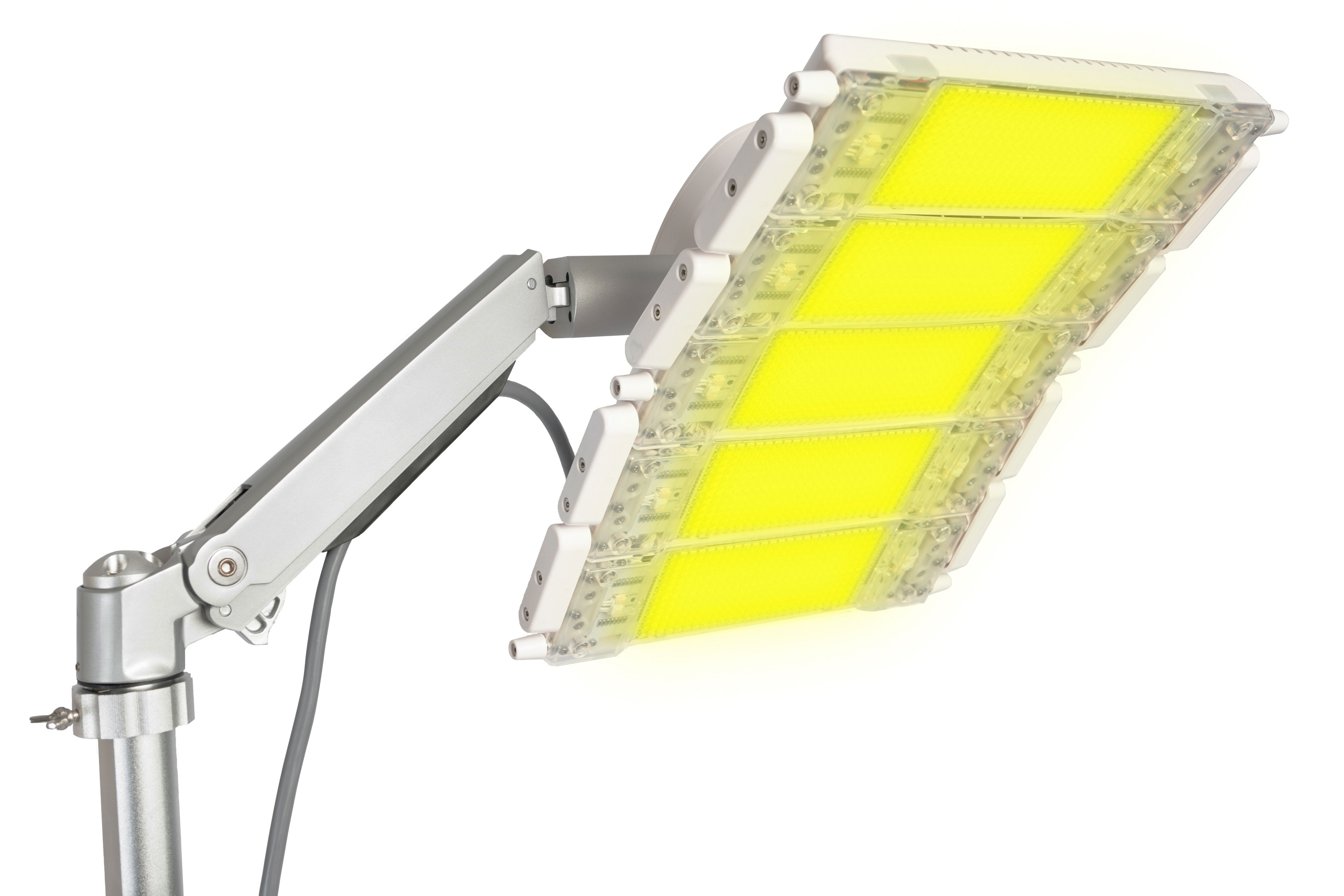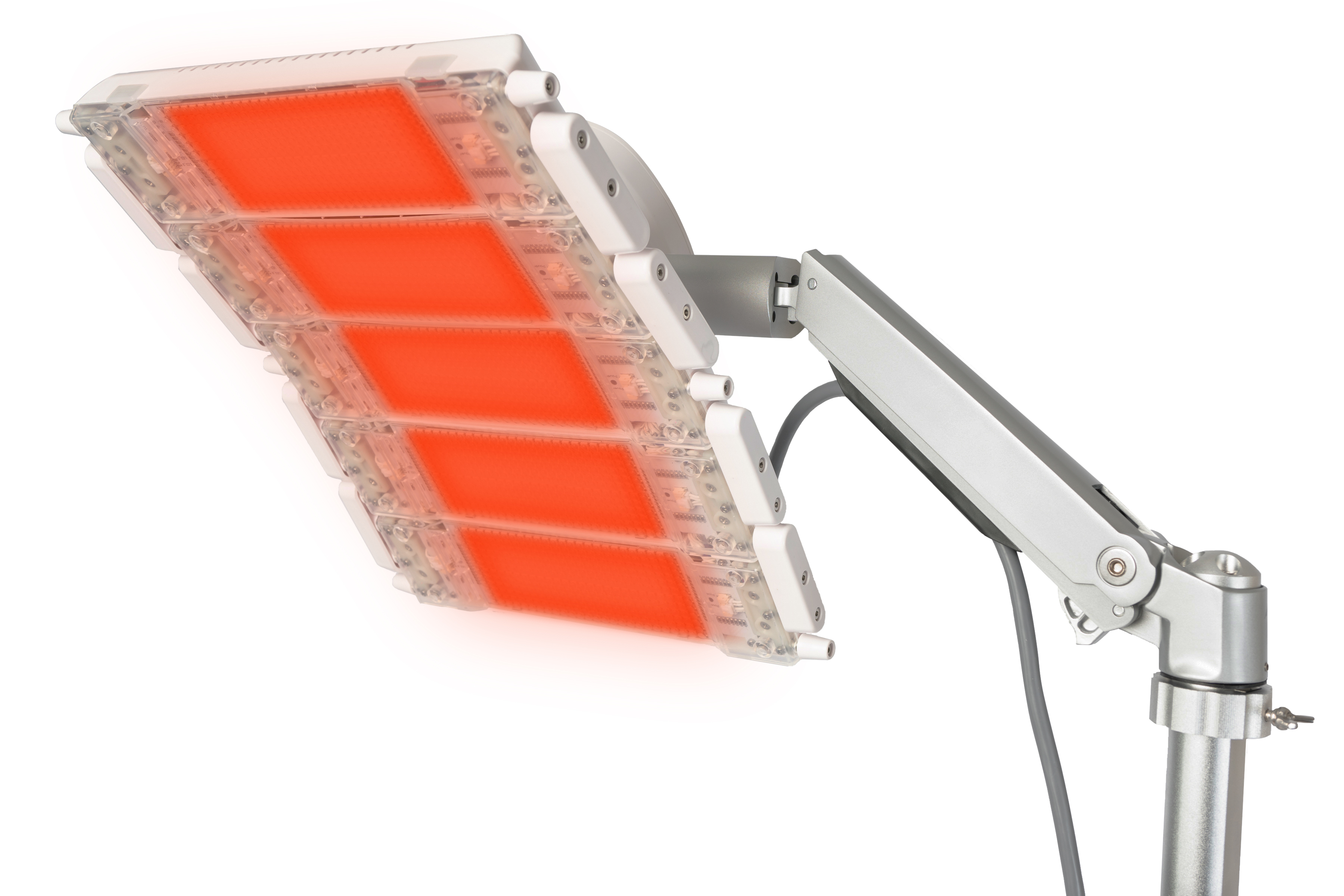Long-term medical research has confirmed that when LED lights of a specified wavelength are irradiated on our skin, it has the effects of skin rejuvenation, acne and freckles removal and so on.
Blue light (410-420nm)
The wavelength is 410-420nm narrow-band blue-violet visible light. Blue light can penetrate to 1 mm inside the skin, which means that blue light can reach the outermost layer of our skin. The use of blue light irradiation matches the peak light absorption of Propionibacterium acnes. The chemical deactivation process of the metabolite endoporphyrin of Propionibacterium acnes produces a large amount of singlet reactive oxygen species, which can produce a large amount of singlet reactive oxygen species for Propionibacterium acnes. Highly toxic environment (high concentration of oxygen content), which leads to the death of bacteria and clears acne on the skin.
Yellow light (585-595nm)
The wavelength is 585-595nm, yellow light can penetrate to 0.5-2 mm inside the skin, so yellow light can pass through the outermost layer of our skin to reach the deep structure of the skin-the dermal papilla layer. High-purity yellow light is fully absorbed by fibroblasts, reducing skin melanin and promoting cell growth, thickening and reorganizing the dermal structure to form a whitening, delicate and elastic skin; outputting high-purity yellow light, matching the peak light absorption of blood vessels, Under the effect of heat, it can safely and effectively improve microcirculation, regulate cell activity, and effectively improve skin problems caused by age.
Red light wavelength (620-630nm)
Red light penetrates the skin deeper than yellow light. The light source emitted by the light source has high intensity, uniform energy density, and extremely high purity red light, which can ensure that the patient is not harmed by other harmful light, and can accurately act on the lesion site, effectively act on the mitochondria of subcutaneous tissue cells, and produce high-efficiency Photochemical biological reaction-an enzymatic reaction, which activates the cell color oxidase C in the mitochondria of the cell, produces more energy to accelerate the synthesis of DNA and RNA, generates a large amount of collagen and fibrous tissue to fill itself, and accelerates the elimination of waste Or dead cells, so as to achieve the effects of repair, whitening, skin rejuvenation, and wrinkle removal.
What kind of LED light therapy are effective?
Although the principle of LED light therapy is simple and the effect is good, there are still many IQ taxes that use LED gimmicks when applied to actual products.
If you want to know how to choose a better LED product, these three parameters must be up to standard: Wavelength, energy, time
One: Only lights with specific wavelengths will be effective. Many products will be mentioned in the promotion. But the wavelength must pay attention to the stability and accuracy range of the wavelength. Many products also claim that their wavelengths are up to standard, but there are many useless wavelengths mixed in them, and this kind of invalid light is useless. Moreover, if the invalid light is in the infrared and ultraviolet range, it is harmful to our skin.
The wavelength range of our LED light device:
Wavelength range of other products
Two: energy. If the number of lights on the machine is not enough and the power supply is not high enough, then the treatment effect will be greatly reduced.
Our LED products:
There are a total of 4320 small lights on our machine that can work at the same time, and the power used is 1000W.
Three: LED phototherapy requires a long exposure time, but if it is a laser type plus LED, the effect is not 1+1>2, but 1+1<2. Because the laser time is very short, in the order of milliseconds. The extra LED light not only cannot be used to treat the skin during hair removal, but it will take up the power of the hardware and sacrifice the performance and heat dissipation of the machine.
The research theoretically pointed out that the wavelength of blue light is close to that of long-wave ultraviolet UVA, which can induce biological effects related to UVA radiation. At the same time, it is confirmed from histology that the skin irradiated by 420nm blue light has very slight pigmentation, but the proportion is small, and it will only produce short-term melanin formation without causing cell apoptosis (that is, there will be no major problems) . And after the blue light irradiation is stopped, the production of melanocytes is rapidly reduced, and melanin deposition is reduced.
Therefore, both theoretical research and experimental results show that short-wave blue light has the risk of “tanning” the skin, which is similar to ultraviolet tanning. However, the occurrence of this melanin deposition phenomenon is not high, and it will gradually recover after the blue light irradiation is stopped, so there is no need to worry too much.
In fact, compared to laser and intense pulsed light, LED blue light used to treat acne has a milder effect, and the risk of melanin deposits on the surface of the skin is not so high.
So what has been said above, you may already understand. Red and blue light have the risk of slightly darkening the skin, but the possibility is not particularly high, and it can be restored (eat more vegetables and fruits rich in vitamins).
Post time: Aug-30-2021









